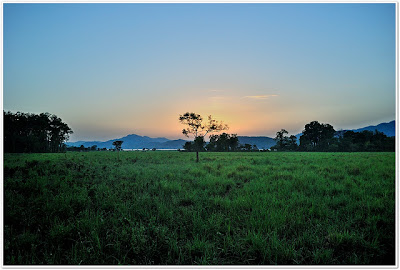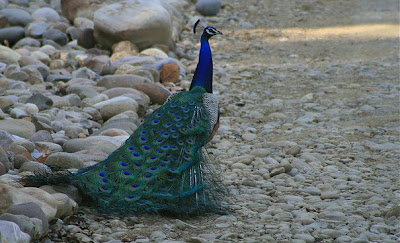Jim Corbett National Park, world renowned for tiger conservation, is the oldest national park situated in the Nainital district of the Uttarakhand state of India. It is located between 29.25' to 29.39' north latitudes and 78.44' to 79.07' east longitudes. The standard altitude of the region ranges between 1,181 ft (360 m) and 3,412 ft (1,040 m). The park encompasses total area of around 1,301.58 square kilometers (509.09 sq mi), of which 520 square kilometers (200 sq mi) is dense core area while 797.72 square kilometres (308.00 sq mi) covers buffer part. The core area constitutes the Jim Corbett National Park whilst the buffer area encloses reserve forests.
Besides being popular as tiger reserve, the Jim Corbett National Park is also a heaven for the adventure enthusiast and wildlife adventure lovers. The area of park is surrounded by hills, revering belts, marshy depressions, grass lands and large lakes and streams.
The Jim Corbett National Park was named after a hunter and naturalist, Jim Corbett. This park was established in 1936 as Hailey National Park, with an objective to protect and preserve the fast becoming endangered species of Tiger, Bengal Tiger.
Jim Corbett National Park is a must visit place from travel and tourism point of view. Being located at the foothills of Central Himalayas, the park is famous for housing both Himalayan and Peninsular flora and fauna. One can spot of more than 400 species of plants and wildlife.
 |
| Sunset at Jim National Park |
A total of 488 different species of plants including Sal, Khair, Sissoo, Ber, Kuthber, Bel, Chbilla, Dhak, Semal, Khingan, Kharpat, Rohini, Bakli, Pula and Bamboo have been recorded in the park. Inside the reserve, the density of Sal trees is highest while that of Anogeissus-Acacia-catechu is lowest.
Among the wildlife, the most ferocious yet the most protected beings of the jungles are indeed the royal Bengal tigers. There is a large concentration of other animals including four kinds of Deer, Wild Boar and some lesser-known animals. Though the park is notable for the population of Bengal Tigers they are not easily sighted because of the thick cover of the forest. The other faunas of this park are Leopards, Elephants, Cheetahs, Sambars, Hog Deers, Barking Deers, Wildboars, Langoors, Rhesus Monkeys and many other species.
Besides, Corbett is also known as bird watcher's paradise as it provides shelter to around 585 resident and migratory birds mainly serpent eagles, blossom headed parakeet and the red jungle fowl.
While visiting Jim Corbett National Park one should never forget to visit the various safari zones of this park such as Bijrani Safari Zone, Dhikala Safari Zone, Durga Devi Safari Zone, Jhirna Safari Zone and many more. Of all these zones (gates), Jhirna zone is open throughout the year for visitors where one can enjoy Jeep safari up to 30 to 35 kms. Bijrani zone is open from mid October and the main core zone of the national park is Dhikala and this can be visited from 15th of November every year.
 |
Indian Peafowl | Jim Corbett National Park |
Also for wildlife enthusiasts and knowledge seekers, Jim Corbett Park is a best place to holiday at and attend several training programs conducted by the park officials. The main objective of these programs is to impart knowledge about wildlife. The other training courses include subjects like natural history, visitor management, and park interpretation. Furthermore, Indian Government also organizes workshops on ecotourism in Corbett National Park and the Garhwal region so as to ensure that the park remains safe due to the high number of tourists visiting during peak season. In this Park, keeping the aim of the reserve in mind, visitors are allowed as per the rules and regulation implemented by the park authorities.
The nearest big town to Corbett National Park is Rishikesh, at a distance of about 301 Km.
Wanna to check more about this National Park Visit www.hoparoundindia.com
Wanna to check more about this National Park Visit www.hoparoundindia.com








Nice Article! Thanks for sharing with us.
ReplyDeleteJim Corbett National Park Tour Packages
Nice Article! Thanks for sharing with us.
ReplyDeleteJim Corbett National Park India
good post!
ReplyDelete